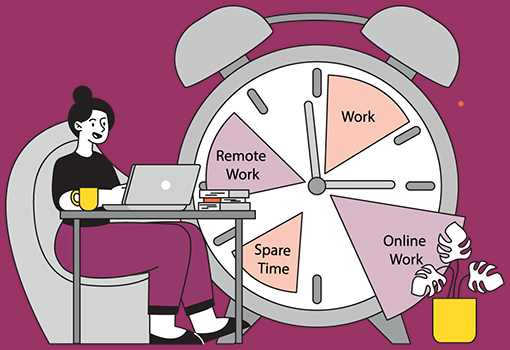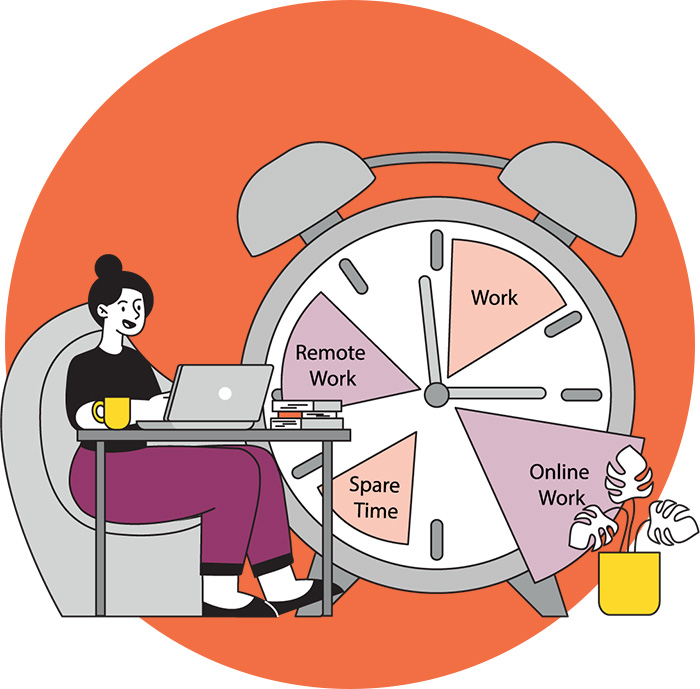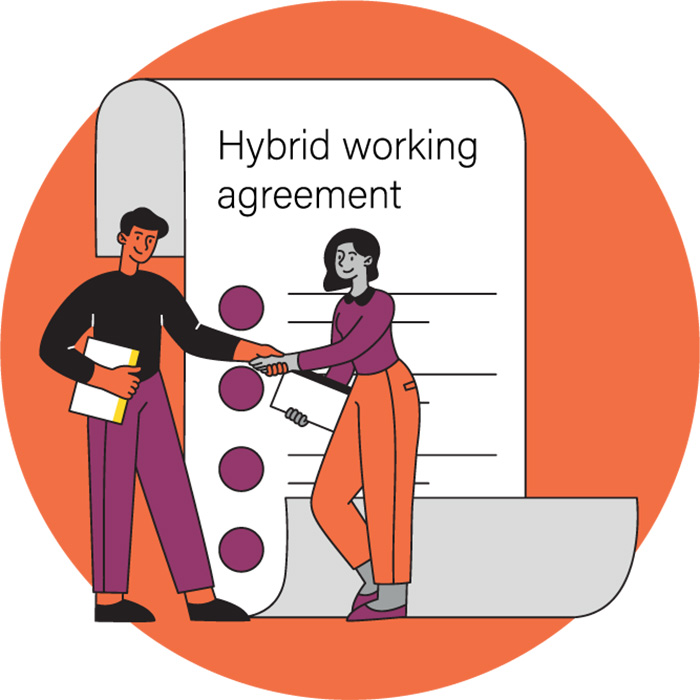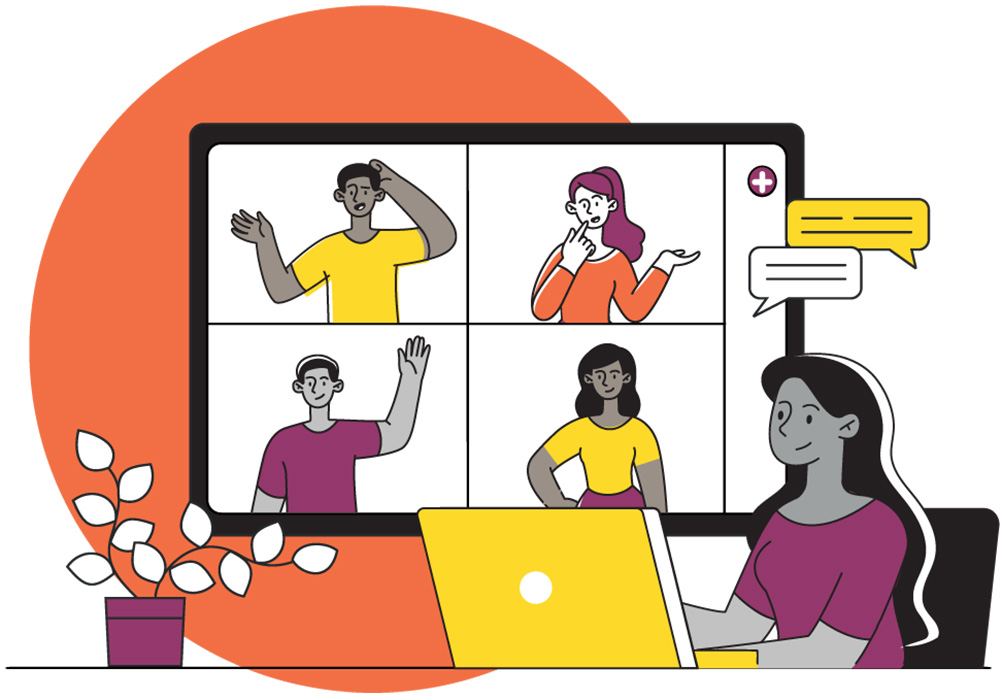A guide to hybrid and flexible working
You can download the PDF here or view its contents below:

A guide
to hybrid and
flexible working

Since the pandemic, working practice and structure have changed a lot and the approach to hybrid working is continuing to evolve within the market research sector.
Achieving a good balance between in-person and remote working while keeping both team members and senior management happy, is a challenge impacting a lot of companies currently.
While there is no one size fits all solution, this document outlines the challenges companies are experiencing and some potential tips for more successful working structures going forward.

Disparity in preferences and approaches to hybrid working amongst staff. This can be impacted by:
-
Working style
if they work better at home or in the office, perceived benefits of being in the office. -
Personal circumstances
where they live - shared house, distance from office, and child responsibilities, conditions like autism / ADHD / anxiety. -
Financial constraints
cost of travel, childcare, dog care) especially given the cost of living / reduced bonuses or pay rises -
Personal priorities
some avoid commuting time to focus on life outside work, whereas others place more importance on socialising in the office
Evolving policies around hybrid working
-
Companies are continuing to review and amend their office requirements and often haven’t settled on their long term approach, post pandemic
-
This can be both unsettling for existing staff and cause issues when recruiting if requirements change soon after an employee joins the company
Difficulties enforcing or encouraging more days in the office
-
Monitoring office attendance without being too authoritarian
-
Overcoming staff resistance and the impact on wider issues with retention
Top five tips for successful hybrid working…



Empower your staff through flexibility:

Flexibility is key for promoting a culture of engagement and trust and goes beyond offering hybrid working, for example:
Flexitime around core working hours (i.e.10-4) to help parents work around childcare, eases financial burden through off-peak travel and accounts for different working styles (early birds versus night owls).
[Non-essential] meeting free slots, (e.g. before 10am, over lunchtime or on specific days) to offer staff a break from video calls, enable more focus time and flexibility around other responsibilities
Flexibility around choice of office days to promote productivity and convenience to reduce resentment about office visits



Communication is crucial:

Sharing clear expectations around hybrid working
Clearly communicating the reasons for the working structure, including benefits for the company, project outputs as well as colleagues themselves (i.e. training, networking, cross-working).
Find ways to communicate working patterns so others can coordinate their plans to make the most of F2F time.



Practice what you preach:

Where possible, senior leaders should set a strong example of the desired working approach, for example:
Visiting the office as often as is expected for other team members
Adopting and actively encouraging more junior members of the team to take advantage of flexibility around core hours
Be engaging when in the office to create an inviting environment



Make the office enticing and meaningful:

Offer an enhanced working environment to what they have at home, for example:
Desk and equipment set up - plenty of well set up desks with the required equipment available
Meeting room availability and set up - plenty of spaces with the right equipment to join online calls and areas for brainstorms/collaboration
Social opportunities - areas for social collaboration, breakfasts, events and knowledge sharing opportunities in the office
The office as a collaboration space - save brainstorms and collaborative activities that benefit from F2F interaction for when in the office. It gives the office a purpose.



Don’t ignore the importance of remote connections in building a consistent culture:

Staff still spend a good proportion of their time working from home. Therefore initiatives to make staff feel connected remotely are still key for overall company culture. This can include:
High engagement on office communication channels (e.g. Slack, Teams) for both work and non-work related discussions
Utilise tools and approaches to ensure effective online meetings and collaboration
Ensure remote workers are able to access F2F meetings online
Staff challenges with remote participation (e.g. step challenges, photo competitions)
Virtual coffee catch ups (e.g. Donut time on Slack)
Praise functions on Teams and Slack to celebrate wins
Virtual drinks on a Friday afternoon
Virtual work socials (e.g. painting workshops, ice breaker challenges, quizzes, etc)
Get the latest MRS news
Our newsletters cover the latest MRS events, policy updates and research news.










